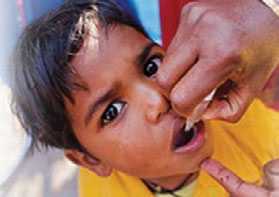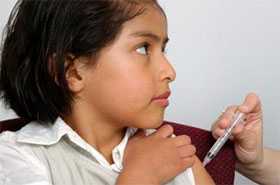What Is Polio?


Two types of vaccine protect against polio: oral poliovirus vaccine (OPV) and inactivated poliovirus vaccine (IPV) (given as an injection in the leg or arm, depending on the patient’s age).
Polio, or poliomyelitis, is a crippling and potentially deadly infectious disease. It is caused by the poliovirus. The virus spreads from person to person and can invade an infected person’s brain and spinal cord, causing paralysis (can’t move parts of the body).
Symptoms
Most people who get infected with poliovirus (about 72 out of 100) will not have any visible symptoms.
About 1 out of 4 people with poliovirus infection will have flu-like symptoms that may include—
- Sore throat
- Fever
- Tiredness
- Nausea
- Headache
- Stomach pain
These symptoms usually last 2 to 5 days then go away on their own.
A smaller proportion of people with poliovirus infection will develop other more serious symptoms that affect the brain and spinal cord:
- Paresthesia (feeling of pins and needles in the legs)
- Meningitis (infection of the covering of the spinal cord and/or brain) occurs in about 1 out of 25 people with poliovirus infection
- Paralysis (can’t move parts of the body) or weakness in the arms, legs, or both, occurs in about 1 out of 200 people with poliovirus infection
Paralysis is the most severe symptom associated with polio because it can lead to permanent disability and death. Between 2 and 10 out of 100 people who have paralysis from poliovirus infection die because the virus affects the muscles that help them breathe.
Even children who seem to fully recover can develop new muscle pain, weakness, or paralysis as adults, 15 to 40 years later. This is called post-polio syndrome.
Note that “poliomyelitis” (or “polio” for short) is defined as the paralytic disease. So only people with the paralytic infection are considered to have the disease.
Transmission
Poliovirus only infects humans. It is very contagious and spreads through person-to-person contact. The virus lives in an infected person’s throat and intestines. It enters the body through the mouth and spreads through contact with the feces (poop) of an infected person and, though less common, through droplets from a sneeze or cough. You can get infected with poliovirus if you have feces on your hands and you touch your mouth. Also, you can get infected if you put in your mouth objects like toys that are contaminated with feces (poop).
An infected person may spread the virus to others immediately before and about 1 to 2 weeks after symptoms appear. The virus can live in an infected person’s feces for many weeks. It can contaminate food and water in unsanitary conditions.
People who don’t have symptoms can still pass the virus to others and make them sick.
Prevention
Polio vaccine protects children by preparing their bodies to fight the polio virus. Almost all children (99 children out of 100) who get all the recommended doses of vaccine will be protected from polio.
There are two types of vaccine that can prevent polio: inactivated poliovirus vaccine (IPV) and oral poliovirus vaccine (OPV). Only IPV has been used in the United States since 2000; OPV is still used throughout much of the world.
More About Polio
- Page last reviewed: July 25, 2017
- Page last updated: July 25, 2017
- Content source:


 ShareCompartir
ShareCompartir